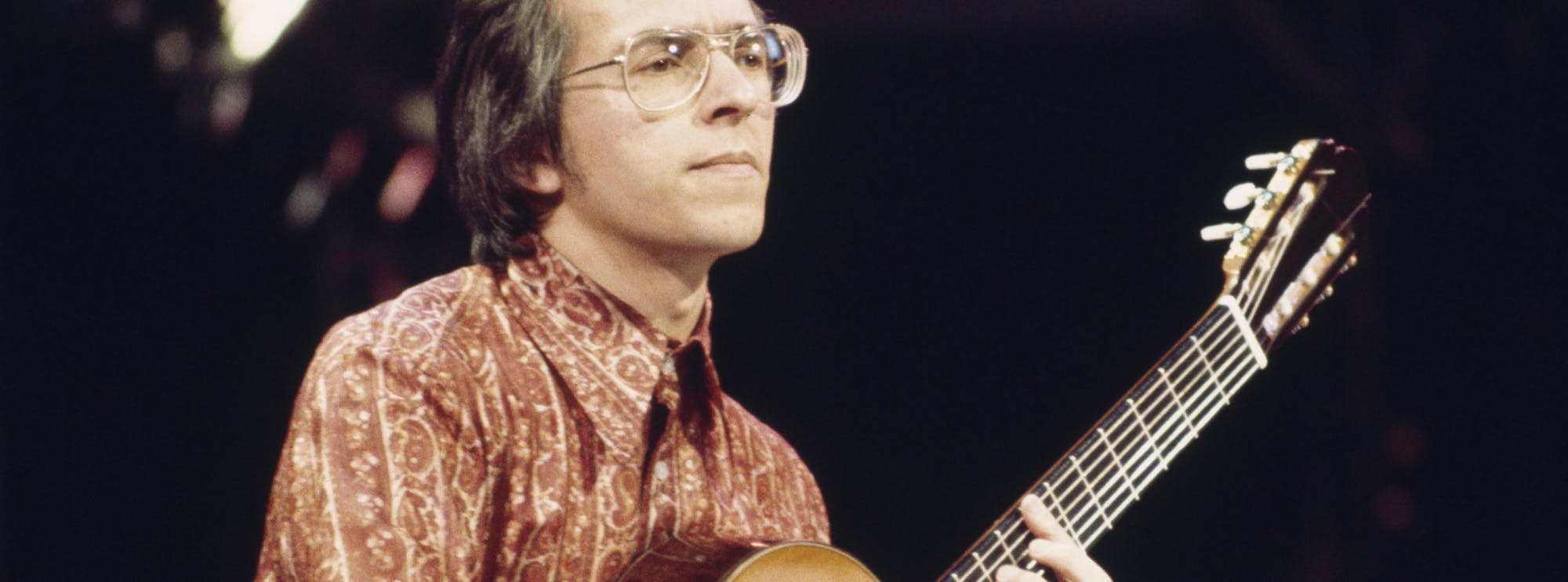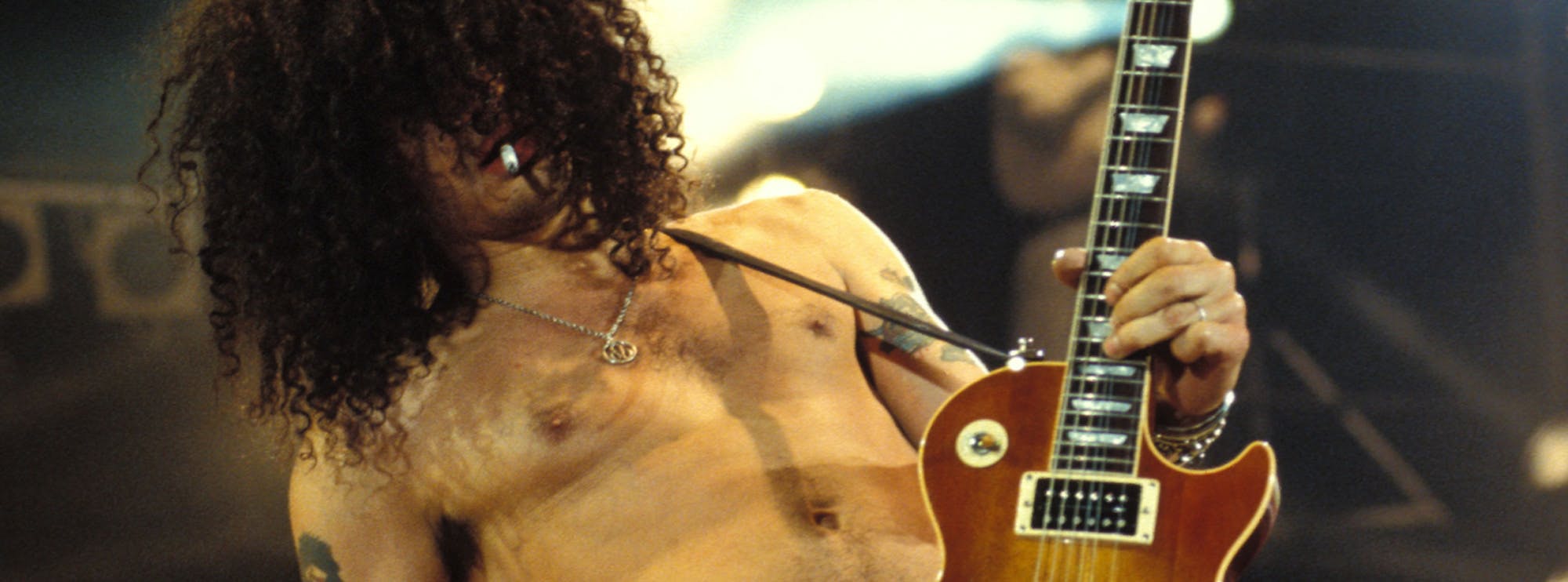Rock the Casbah by The Clash
"Rock the Casbah" by The Clash is an iconic song that blends punk rock energy with Middle Eastern-inspired melodies and rhythms, making it an exciting challenge for guitar players to master. In this note-for-note guitar lesson from Licklibrary.com, we dive into every essential guitar technique used in this track, focusing on the rhythms, riffs, and stylistic nuances that make this song a rock anthem. Danny Gill breaks down this classic track in this exclusive Lick Library video tutorial.
About the Guitarists
"Rock the Casbah" features the unmistakable guitar work of Mick Jones, the guitarist and co-founder of The Clash. Jones' playing on this track demonstrates his ability to merge punk's raw power with more diverse musical elements like reggae, funk, and even Middle Eastern influences. His knack for crafting catchy riffs with tight rhythm sections has been influential for countless guitarists across genres. Jones’ guitar style often emphasises rhythm-driven parts while infusing melodic motifs that showcase both technical skill and songwriting brilliance.
Song Breakdown and Techniques
Rhythm and Power Chords
At its core, "Rock the Casbah" is driven by a punchy power chord progression. Power chords, characterised by their minimalistic structure (root and fifth notes), give the song its bold and anthemic sound.
Benefits: Learning power chords is fundamental for any guitarist, particularly in rock genres. Mastering them allows players to switch quickly between chords, developing both speed and precision.
Palm Muting and Syncopation
Throughout the verses, the song uses palm muting to create a rhythmic and percussive effect. This technique helps emphasise the syncopated rhythms that make "Rock the Casbah" so engaging.
Benefits: Palm muting teaches control over dynamics and articulation. When combined with syncopated rhythms, it challenges players to stay in time while producing a tight, controlled sound.
Octave Melodies
Mick Jones incorporates octave melodies to add depth and texture to the track. These octave-based riffs create a sense of movement while keeping the sound harmonically grounded.
Benefits: Practicing octave melodies improves fretboard navigation and allows guitarists to explore different tonal ranges without getting bogged down in complex fingerings.
Slides
Throughout the song, slides are used to transition smoothly between notes and chords, adding to the fluid, energetic feel of the track. This technique is used frequently in the post-chorus sections to build momentum.
Benefits: Sliding between notes helps develop fluidity in playing, allowing for seamless transitions between chords or individual notes while adding an expressive flair to your playing.
Vibrato
Although subtle, vibrato is applied during some of the lead parts and sustained notes. This technique adds expressiveness and makes the notes resonate longer.
Benefits: Vibrato is key for developing control over the guitar's tone. It enhances sustain and gives players the ability to convey more emotion in their performance, making every note stand out.
String Bending
Mick Jones uses string bending in the melodic sections, especially during the song's bridge and solo. These bends help accentuate certain notes, giving them more prominence and feel.
Benefits: Bending strings is an essential technique for rock guitarists. It strengthens finger dexterity and helps players develop a better ear for pitch, as precise bending is required to hit the right note.
Open String Riffs
Another prominent feature in the song's guitar work is the use of open string riffs, especially in the intro and verse sections. This technique adds a bright and ringing sound, complementing the syncopated rhythms and enhancing the song's overall dynamics.
Benefits: Playing open string riffs is excellent for developing timing and rhythm. It also teaches players how to incorporate the unique timbre of open strings into their playing for a more varied sound.
Arpeggiated Chord Progressions
In some sections of the track, arpeggios are used to break down the chord progressions. By picking individual notes of the chords, Jones creates a more textured and intricate sound.
Benefits: Learning to play arpeggiated chord progressions improves a player’s picking hand technique, enhances accuracy, and allows for a better understanding of harmony across the fretboard.
Why Learn These Techniques?
Learning the guitar techniques found in "Rock the Casbah" offers several benefits for guitarists of all skill levels:
- Mastering Rhythms: Techniques like palm muting and syncopation will help you improve your sense of timing and rhythmic accuracy, making your playing tighter and more professional.
- Developing Versatility: By incorporating techniques like power chords, string bending, and vibrato, you’ll expand your toolbox of essential rock guitar techniques, making you a more versatile player.
- Improving Fluidity and Dynamics: Techniques such as slides and open string riffs enhance your ability to move across the fretboard with ease, while dynamics-focused techniques like vibrato allow you to express more emotion in your playing.
- Strengthening Dexterity: Techniques like string bending, octave melodies, and arpeggios challenge your finger strength and coordination, providing a solid foundation for tackling more advanced songs.
Guitar Techniques Used in 'Rock the Casbah'
- Vibrato
- Alternate Picking
- Power Chords
- Palm Muting
- Octave Melodies
- Slides
- String Bending
- Open String Riffs
- Arpeggiated Chord Progressions
By mastering the techniques found in this lesson, you'll not only be able to play "Rock the Casbah" like Mick Jones but also enhance your overall guitar playing skills.
About The Tutor
Tutor Profile
Danny Gill
Danny Gill is, without a doubt, the most loved tutor by our community. With an incredible array of DVDs and web lessons for LickLibrary covering a wide variety of topics all of which he covers with incredible detail, it's no wonder he carries as much respect as he does. As...



